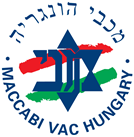33 Day of the Omer ל”ג בעומר –
The various meanings of Fire
Dearfriends,
Human beings feel a certain fascination towards fire, and especially, bonfires. Many of us have experienced memorable moments around bonfires, sharing not only the heat and light, but also songs, histories, dialogues, friendship and love, significant because we make bonfires together, in a group. Even those who understand the scientific processes of combustion and liberation of energy, still feel the appeal, almost miraculous, of the dance of the flames emerging from the logs. That ethereal but unquestionably present phenomenon evokes in us the spiritual and intangible, awaking the spirit of reflection not alwayspresent in our daily life.
Fire has had and retains a very special place in Jewish symbols and practice. Their uses are many, each with a different meaning:
* The Ner Tamid: ordered by the Torah itself[1], and in its character of eternal light, the Ner Tamid represents the eternity of the Jewish People, with our life guaranteed by our Creator in His Covenant with Abraham (and again ratified with Moses). We see that light in each and every synagogue in the world, always close to the Aron Hakodesh containing the Torah Scrolls.
* The Altar fire at the Great Temple: during both Temple Periods, the fire symbolizing the end of the sins disappearing between its light and heat, was a necessary means of expiation for individuals, and nationally for the People of Israel.
* Chanukah Lamps: these flames allude to the miracle of the propagation of light in the darkness of idolatry and the oppression of Greaco-Syrian tyranny over the Jewish People.
* Lag BaOmer Bonfires: an evening celebration around bonfires, especially all over modern Israel, having a double symbolism: the fight for freedom, and the continuous study of the Torah. When the emperor Hadrian prohibited the study of Torah and applied other restrictions on the freedom and expression of the Jewish People in the Land of Israel, a guerrilla war against the Roman empire began in the year 132 with the fighters led militarily by Bar Kochva and spiritually by Rabbi Akiva – the greatest Rabbi of that generation. Bonfires in hidden places away from the prying eyes of Roman troops, were used to prepare that Great Revolt. There, the Bnei Israel planned their military strategies and studied Torah, a transgression punishable by the Roman death penalty, aspiring to two of the highest values of Jewish Civilization: freedom (from the Roman yoke) and continuity of Judaism through study of Torah.
The light and heat of bonfires fed the spirit of resistance, the battles and campaigns of our People, and expressed the dual aspects of Bar Kochva and Rabbi Akiva: body and soul, physical and spiritual freedom, action and reflection.
Today, when we carry the Maccabi Torch from country to country and continent to continent during Chanukah – always starting from the State of Israel and the Tombs of the Maccabees at Modi’in, we carry with us many of the various messages of Jewish fire: our commitment to Jewish continuity; the centrality of the State of Israel in the present and future of our People; the heat of our bodies and spirits, so ever-present in the warmth and affection of our Maccabi Family, and our aspiration to be a light unto our own Nation, and unto the Nations of the World. This year, just weeks before the Maccabiah – the biggest event of the Jewish people, our torch will shine from Jerusalem to the world.
May this Lag BaOmer be a true celebration of the spirit and the strength of the Am Israel, and may we be worthy representatives of our ancient and enduring values, in our homes, families, Communities and societies.
May the light of our glorious Lag BaOmer bonfires illuminate our present and the bright promise of our future; may we kindle and sustain the spirit of our long national continuity in this festival!
Lag BaOmer Sameach!
Chazak ve’Ematz!
RABBI CARLOS A. TAPIERO
Deputy Director-General & Director of Education
Maccabi World Union
[1]Sh’mot (Exodus) XXVII, 20; Vaikrah (Leviticus) XXIV, 2.














